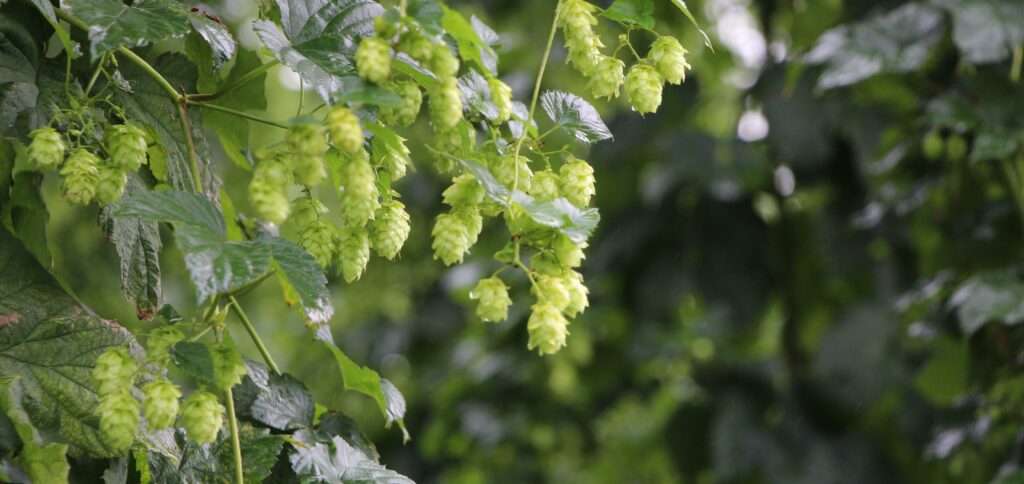Beer industry: hop production is on the rise – at least for now

According to the current BarthHaas Report Hops, the beer industry reported a positive development worldwide in 2019, with cultivation areas and harvest yields as well as the amount of alpha acid and beer output all increasing year-on-year.
In 2019, 1,913 million hectoliters (hl) were brewed throughout the world, representing a slight gain of 0.5 percent over the previous year. Germany ranked fifth among the world’s largest beer producing countries in 2019. China is at the top of list, followed by the United States, Brazil and Mexico. The figures for 2020 are expected to decline significantly due to the global coronavirus pandemic.
The beer industry reports different developments with regard to country-by-country beer output

The beer output in Europe remains virtually unchanged, although it is worth noting that Spain saw an increase, and Germany as well as Poland both recorded declines. While the gains in Mexico and Brazil resulted in a boost in the Americas, which stood in contrast to the United States and Venezuela, where output fell.
Moreover, even though beer production once again declined in Japan and China in 2019, considerably more beer was brewed in Asia on the whole. This development in the Asian beer market was particularly driven by Cambodia, Vietnam and Thailand. The relatively stable overall result in Africa was particularly attributable to growth in South Africa.
Seven German brewing groups ranked among the top 40
The world’s 40 largest brewing groups (see table) accounted for 1,723 million hectoliters of last year’s beer production, representing a share of around 90 percent of the global beer market.
Seven German brewing groups ranked among the top 40, with Radeberger Gruppe coming in 23, followed by TCB Beteiligungsgesellschaft placing 24. Oettinger Brauerei ranks 28, Bitburger Brauereigruppe 30, and then Krombacher 31 and Paulaner Brauerei Gruppe 32. Warsteiner Brauerei comes in 38. These seven German brewing groups represent a 2.6 percent share of the global beer market.

Table: The world’s top ten brewing groups according to beer output (as of: December 31, 2019, source: BarthHaas Report 2019/2020)
| Ranking | Brewery | Beer output 2019 [million hl] | Change to 2018 [%] | Share of world beer production [%] |
| 1 | AB InBev (Belgium) | 561.4 | -1.0 | 29.3 |
| 2 | Heineken (Netherlands) | 241.4 | +3.3 | 12.6 |
| 3 | China Resources Snow Breweries (China) | 114.3 | -5.5 | 6.0 |
| 4 | Carlsberg (Denmark) | 112.5 | +0.2 | 5.9 |
| 5 | Molson Coors (USA/Canada) | 92.7 | -4.0 | 4.8 |
| 6 | Tsingtao Brewery Group (China) | 80.5 | +0.2 | 4.2 |
| 7 | Asahi (Japan) | 57.3 | -1.0 | 3.0 |
| 8 | Yanjing (China) | 38.2 | +0.5 | 2.0 |
| 9 | BGI/Groupe Castel (France) | 36.7 | -9.4 | 1.9 |
| 10 | Efes Group (Turkey) | 36.2 | +13.8 | 1.9 |
Increase in hop cultivation areas and harvest yields
Last year, the global hop cultivation area amounted to a total of 61,559 hectares and this figure continues to climb. In Germany alone, 20,417 hectares of hop were cultivated in 2019, amounting to an increase of 1.4 percent compared to the previous year’s planted area.
The United States also reported a rise in the amount of hop cultivation areas. “At just under 130,000 tons, the 2019 harvest was the largest since 1993,” says Heinrich Meier. Last year, 129,479 tons of hop were harvested across the globe. In both of the most important cultivation areas, namely Germany and the United States, the harvest yields amounted to 48,472 and 50,821 tons, respectively. Furthermore, alpha acid production was up 16 percent worldwide. According to the current BarthHaas Report, 2019 marks a record year in terms of the amount of globally harvested alpha acid, but Germany experienced another alpha-weak year, continuing a trend that has been seen in four out of the last five years.
Impact of the coronavirus crisis on the beer industry
The coronavirus pandemic has had a substantial impact on the international brewing industry. “The craft sector, which is particularly important for the hop industry, has been hit disproportionately, since a large number of craft breweries depend on serving customers on site,” says Heinrich Meier, explaining the current changes facing the beer industry.
Depending on the calculation model, this may result in a 14 percent decline in beer output in 2020 compared to the previous year. However, the dynamic development of the pandemic and the fact that the brewing year is still underway only allow estimates at this time. From today’s perspective, the beer output level seen in 2019 will not be achieved again until 2022 at the earliest, if not later.
“If the parties involved are unable to join together in a trusting cooperation and to reinstate a balance between supply and demand, then this will pose a threat and ultimately undermine the long-term efficiency of the hop industry, which cannot be in anyone’s interest,” says Meier.
Would you like to find out more about changes and innovations in the beer industry or share your experiences with other industry representatives? Then we invite you to participate in the next drinktec, which will be held in Munich from September 12 to 16, 2022.
In November 2019, beer industry representatives met at the first-ever “Global Hop Summit”.
The invitation extended by Verband Deutscher Hopfenpflanzer (German Hop Growers Association), Deutscher Hopfenwirtschaftsverband (German Hop Industry Association) and Internationales Hopfenbaubüro (International Hop Growers Convention) gave more than 100 participants from 13 countries the opportunity to discuss joint approaches aimed at ensuring the future of global hop production.
This article is powered by Verlag W. Sachon.
